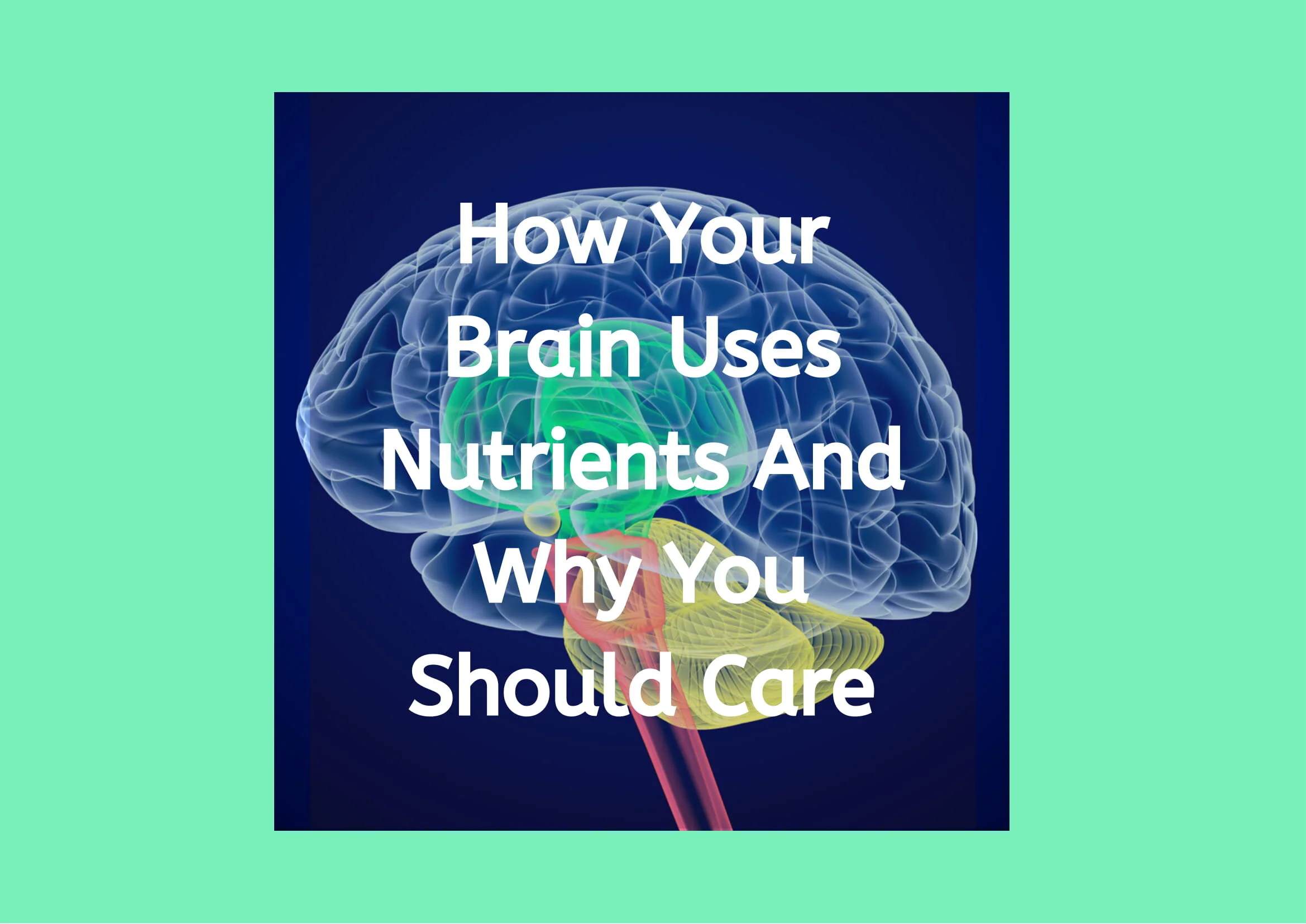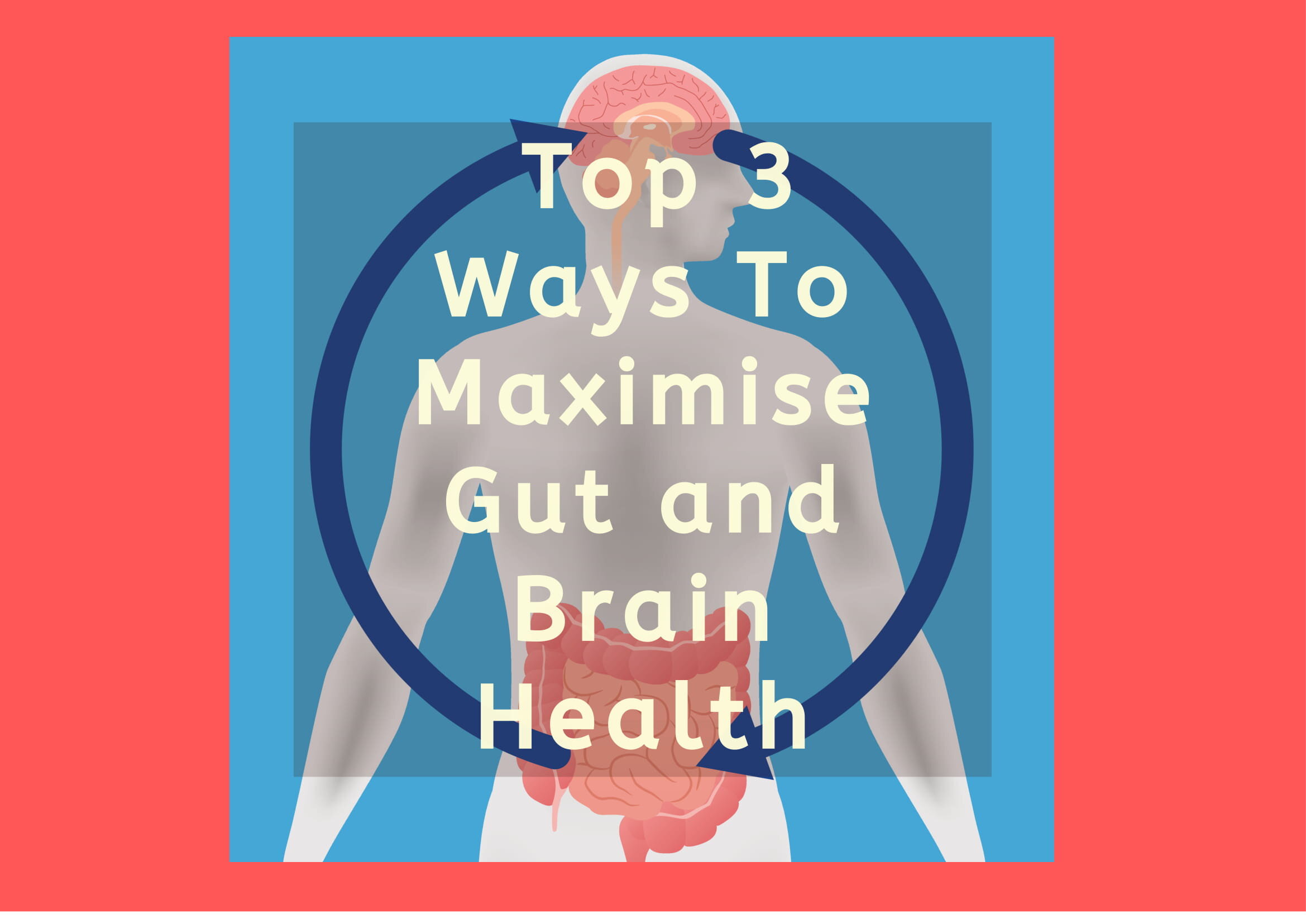Here are five important factors to consider when deciding what fats and oils to consume.
As every single cell of ours needs the right type of lipids (the technical term for fats and oils) it’s critical that you consume the right types of these essential nutrients if you care about your health - including your very fatty brain!
Warning: this is a long article and contains details that are hard to find in one place, but if you care about the health of your brain (and body) you’ll want to know and then action this knowledge!
[I use the words fats and oils together but they’re also interchangeable.]
If you don’t eat the right fats and oils, you are setting yourself up for poor physical and mental health
Every single cell in your body and brain is surrounded by a membrane, which is made up of fats and oils. If they’re the right kind of fats and oils, they are doing a great job, but if they’re not, they can’t function optimally, which directly impacts cellular health.
Most people who eat a normal western diet today are deficient in the right kinds of fats and oils because of many factors. This has led to us – unknowingly – consuming too much of one type of oil, in damaged form, and very little of another, very important type of oil.
Let’s discuss this in a little more detail to give you a solid understanding of how we have been led astray by the oil manufacturing industry.
There are three main categories of oils, those being Saturated fats, Monounsaturated fats, and Polyunsaturated fats:
Saturated fats are made up of two main categories, animal or plant forms.
Monounsaturated fats are a simple group of fats, of which olive oil is the most well-known.
Polyunsaturated fats are also called Essential Fatty Acids or EFA’s, because we have to get them from our diet, and can’t manufacture them in our bodies, as we can with the saturated and monounsaturated fats.
Furthermore, Polyunsaturated fats are divided into two groups, Omega 3 and Omega 6 fats.
In the last 50 years, we have been consuming a lot more Omega 6 fats because farmers, and then food manufacturers, chose to produce the easiest to grow and process oils, which these are, compared to Omega 3.
Omega 3 oils are more sensitive to light, heat and oxygen when compared to Omega 6 oils, and they are also cold-weather oils, so farmers preferred to grow Omega 6 oils, and manufacturers didn’t want to be bothered with oils that went rancid quickly.
So, inadvertently, our consumption of Omega 3 declined, with devastating effects on our health.
And although we do need Omega 6 oils as well, we need them to be undamaged, and most of them are damaged due to the processing that they undergo while being produced.
Omega 3 oils are unique in their structure, and the way they work in our cell membranes is very specific. If your cell membranes don’t work properly, nothing in your body will work properly.
And as 60% of our brain is made up of fat, it must contain the right fats to work optimally.
This is why these oils are so important, and the lack of them in our diet has led to obesity, Type II diabetes, cardiovascular disease (CVD), immune disorders, severe mental ill-health, and cognitive decline.
Unfortunately, very few people understand the importance of these oils, and how they interact with every single aspect of our health and well-being, with our physical, mental and emotional health all dependent on their presence in our diet.
You also need to ensure that you are consuming the right ratio of these undamaged essential fatty acids.
Why you aren’t getting the right ratio of the right fats and oils in your current diet
When farmers realised, about 60 years ago that it was easier to grow warm weather oils, such as safflower, sunflower, soya, and corn oils, the Omega 6 oils, they started growing more of them.
They’d also realised that it was much harder to keep the Omega 3 oils from going rancid, because they are more sensitive to light, heat and oxygen than the Omega 6’s.
So, we started eating a lot of Omega 6 oils, and very few Omega 3 oils.
And of course, food processing also took off, and food manufacturers preferred using the warm weather oils for ready-made meals, and other mass-produced convenience, processed foods too, so we had another source of these oils in our food chain.
At the end of the 19th century, the average persons diet had an Omega 6 to Omega 3 ratio of 2:1 – 4:1.
The latest research into our modern diets essential fatty status indicates that those eating a typical western diet, consume more in the ratio of 10:1 to 20:1. Some figures are even closer to 50:1.
The importance of this news is that our ratio should rather be in favour of the Omega 3 oils, as they are the ones that keep our central nervous system (CNS) running smoothly, among other very important tasks.
Furthermore, as our brain is made up 60% fat, we need to consume these oils to keep our brains working well.
But most people are eating far too much Omega 6 oils, simply because those are the oils that have found their way into our food supply.
You know already, from reading the previous section, that we need both kinds of essential oils, however, even if you are getting a lot of the Omega 6 oils because of our food supply, most of these oils are damaged, because of the way they are processed.
So you aren’t really getting the benefit of these oils, as they’re damaged, and you’re also consuming damaged oil molecules due to harsh processing. We’ll discuss this important issue in the next section.
A simple way of ascertaining whether you suffer from a deficiency of these oils, is to look at your skin. If it’s dry and flaky, or if you suffer from hard, dry, cracked heels, or little white bumps on the back of your upper arms, as well as dry hair, eyes, and skin rashes, you can be sure that your body is crying out for the right oils.
Another important point to keep in mind is that too many Omega 6 oils can inhibit the conversion of Omega 3 oils, to the longer chain polyunsaturated fatty acids, docasahexaenoic acid (DHA) and eicosapentaenoic acid (EPA), which are very active in your brain.
So, getting the ratio right between these two essential fatty acids, Omega 3 and Omega 6 is critical.
Although it’s not your fault that there are far too many Omega 6 oils in our food supply, once you understand how this happened, and how it is having an effect on our physical and mental health, you can ensure you don’t consume processed foods.
You will also have to start looking for good, undamaged Omega 3 oils, to ensure that your CNS has what it needs to function optimally.
And, you have to make sure that oils are undamaged and in the right ratio, which researchers believe should be in the favour of Omega 3.
So, the right ratio is 1 part Omega 6 for 2 parts Omega 3 simple due to the Omega 3s being used in our most metabolically active organs, including the brain.
How fats and oils are processed is CRITICALLY important
Saturated fats, due to their molecular structure are least damaged by heat. Monounsaturated fats are also damaged when they are heated contrary to popular opinion and cooking shows because they have one double carbon bond which makes them capable of being damaged through light, heat and oxygen.
However, polyunsaturated fats and oils are the most delicate of all fats, and should never be heated, because their molecular structure is extremely sensitive to damage through light, heat and oxygen.
Unfortunately, these fats and oils are the very ones that are processed in ways that damage their structure, and therefore limit their benefit in your body and brain – in fact they end up causing damage because they can’t function optimally in cell membranes.
Mechanical pressing involves using a small pressing system, to press the oil out of the raw material, just as you’d do to fruit juice. Temperatures are kept to a minimum, from about 30° C to 33° C. This is a good way to process fats and oils, and if the seed is organic as well, you have a good product.
Mechanical (expeller) pressing also involves crushing the seeds, but it is done at an intense pressure, that raises the temperature of the oil to anything from 85 – 93° C. The seeds can be heated up to 120 / 250° C, before being placed in the expeller, as heating them beforehand makes the pressing more efficient.
Solvent extraction is a very efficient, but harmful and damaging, method of oil extraction, resulting in greater profits for the supplier, but less health for the consumer. It is the preferred method of extraction for large oil manufacturers.
Seeds are cracked to expose the oil, and then combined with a chemical solution, which contains a chemical solvent / solution (usually hexane, or trichloroethylene, which are both carcinogenic and petroleum by-products).
This solvent ‘pulls’ or ‘sucks’ the oil out of the seed, and this oil is then heated to about 200° C/400° F, to evaporate the solvent off.
Furthermore, these solvent extracted oils are subjected to bleaching, refining, with sodium hydroxide, and deodorisation, while carbon is used to remove any last traces of vitamins A, E and F, lecithin, chlorophyll and any other nutrient, resulting in a bland, nutrient deficient, toxic end-product.
Preservatives such as BHA/BHT are also added. Most commercial vegetable oils that are supplied to supermarkets are extracted by this method, as it can be done in bulk and is cheaper than the manual extraction processes.
Therefore, the very oils that should not be exposed to light, heat and oxygen are the ones that are damaged in the extraction process. So, the oils that you are most likely consuming are damaged even before you get them home.
Therefore, you can be deficient in Omega 6 oils, even though you are eating them. You need the undamaged form of both Omega 6 and Omega 3.
Now that you know why you should care about how fats and oils are processed, check the labels of the oils in the ‘golden oil aisles’ of most supermarkets.
You won’t see any explanation about how the oils were extracted unless it’s a selling point. Now you know why!
Why fats and oils should be organic
Unfortunately, pesticides accumulate in fat, therefore fats and oils are particularly vulnerable to accumulating pesticides.
PCB’s or polychlorinated bi-phenyls are a particular type of pesticide, and they have been called Persistent Organic Pesticides (POPs).
Their production was banned in the USA in the 1970’s, due to their toxicity.
However, they are still produced in some countries, and therefore still form part of our eco-system, being long-lived and unable to break down naturally.
We cannot get rid of them permanently, and being a POP, they are at their highest concentration at the top of the food chain.
Therefore, pesticides, whether they are persistent or not, are present in both animal and plant fat, and will therefore be in nuts and seeds too, which means that they will be in the oils that you are consuming if you don’t choose organic oils.
This is particularly bad for your brain, as you now know that 60% of your brain is made up of fat. Furthermore, all your membranes will end up having pesticide residue in them, which will impact their ability to function optimally.
And there is mounting evidence that Parkinson’s disease is linked to pesticide exposure, as farmers who farm conventionally (not organically) tend to have higher rates of this disease.
Genetically modified foods are foods that have been grown from seeds whose genetic structure has been modified. This is done so that the plant is more resistant to varying weather conditions, and pests.
However, we have no long-term evidence that produce resulting from these modifications is safe for human or animal consumption.
Unfortunately, various forms of genetically modified foods are finding their way into our food supply, so this is another excellent reason to ensure that the oils and fats you use are organic, as then they don’t contain any genetically modified substances either.
Organically produced fats and oils are also generally produced using the first method of oil extraction we discussed in the previous section, mechanical pressing, as the producers don’t want to destroy a premium organic seed crop by heating the oil during processing.
So, you can generally be sure that the resultant organic oil is free of not only pesticides but is also undamaged in terms of heat used during the extraction process.
How many damaged fats and oils are you unknowingly eating?
Our food supply is not only full of damaged oils due to the extraction process, which heats the delicate fat molecules.
There are two other ways to destroy the delicate molecules that EFAs are composed of. One is through heating the oil during processing and when cooking with the oils, and the other is through a process called hydrogenation.
Hydrogenation is a process that changes liquid oil into a solid substance, by adding hydrogen atoms to the oil. This not only turns the fat or oil solid, it also stops it from spoiling as quickly as it would have if it were kept in a liquid form.
The resulting product is made up of fats that have changed in structure, and they are called trans-fats. We now know that these damaged fats are dangerous to our health.
These damaged oils, or trans-fats, have been part of the food processing industry for nearly one hundred years, and although researchers understood their potential to cause severe harm to us at least 40 years ago, they have only recently been seen by the public as being hazardous to our health.
Which is why the food manufacturers must find some other way to get these oils solid, and the process that they are starting to use is called interesterification, which involves the manipulation of enzymes to get the liquid oil transformed into a solid substance.
There are no long-term studies on whether this process will also be damaging to our health, so ensure you read the labels on any processed food items that contain oil and fat and avoid the ones with any trans fats in them, as well as any that mention another form of oil or fat that you don’t recognise.
If you enjoy detailed scientific explanations and maths this is for you - if not, skip it:
There are about 1X1021 molecules of oil or fat in one tablespoon of oil. Therefore the potential for them to cause serious damage at a cellular level is very high. These oil molecules are used for membrane structure and biochemical processes, which mean there are a variety of different possibilities in terms of where and how damage to cells will accumulate. Even if you consume one tablespoon of damaged oil, you are ingesting 100 000 defective oil molecules, for each cell of your body! Most people have consumed many more than only one tablespoon of damaged oil in their whole lifetime. When one considers the amount of processed foods that contain these damaged fats and oils, you possibly have cell membranes and biochemical processes that haven’t worked properly for decades. (Thanks to Udo Erasmus for laboring over the numbers to clarify these facts.)
Remember that food manufacturers must produce tasty food, that doesn’t go off, otherwise they lose money.
When they use good quality oils, the cost goes up, and they lose money when the product goes off, which it will, because good fats will go rancid if they’re left to the elements.
Vegetable spreads, mayonnaise, nut butters, and other instant, ready-to-eat meals, as well as crisps and other baked good all contain damaged fats. You will become aware of how many food items contain these damaged fats when you start reading labels.
Conclusion
The reason why it’s so important to care about the kind of fats and oils that you consume is because every single cell in your body requires a well-functioning membrane to be able to function optimally.
When the cell membrane is made up of the right kind of fats and oils, then the cell is flexible, permeable and malleable. It can respond to its environment and optimally facilitate movement of compounds into and out of the cell, allowing optimal energy production and metabolic waste removal.
Follow these pointers when purchasing fats and oils:
1. Choose a blend of oils that have the right ratio of Omega 6 to Omega 3.
2. Ensure the oils are undamaged and organic.
3. Read the labels of the ready-made food that you consume and look for options that contain no damaged fats.
4. When you prepare your meals at home, rather use organic butter or coconut oil to cook with.
5. Don’t purchase cheap polyunsaturated fats and oils – they are solvent extracted, and damaged before they even reach the store.
In Chapter 7 of my first book (with the blue cover) I dive deeper into this topic and you can find places to purchase the book here.
References
Bang HO, Dyerberg J, Sinclair HM. The composition of the Eskimo food in northwestern Greenland. Am J Clin Nutr 1980 Dec; 33(12): 2657-61.
Bourre JM. Roles of unsaturated fatty acids (especially omega-3 fatty acids) in the brain at various ages and during ageing. J Nutr Health Aging 2004;8(3):163-74.
Erasmus U. Fats that heal, fats that kill. Burnaby BC, Canada: Alive Books;1993.
Holman RT. The slow discovery of the importance of omega 3 Essential Fatty Acids in human health. J Nutr 1998 Feb; 128(s Suppl): 427S-433S.
McCabe, D. Feed Your Brain – 7 Steps to a Lighter, Brighter, You! Sydney, Australia: Exisle Publishing: 2016
Schmidt MA. Smart Fats – how dietary fats and oils affect mental, physical and emotional intelligence. Berkeley, California: Frog Ltd Pub; 1997.
Uauy R, Mena P, Rojas C. Essential fatty acids in early life: structural and functional role. Proc Nutr Soc 2000 Feb; 59(1): 3-15.




















